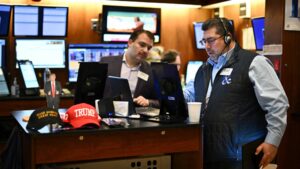The Risks of Crowded Trades: What Every Investor Should Know
At Extreme Investor Network, we believe that understanding market dynamics is crucial for making informed investment decisions. One recent study from Morgan Stanley highlights the impact of "crowded trades," which can lead to increased volatility and muted portfolio gains. If you’re serious about your investment strategy, keep reading as we delve deeper into the implications of owning overcrowded stocks and how you can navigate this phenomenon effectively.
What Are Crowded Trades?
In essence, crowded trades refer to situations where a large number of investors—especially institutional investors like hedge funds—buy stock in the same company or asset, often resulting in inflated prices and heightened volatility. Morgan Stanley analyzed the 70 largest hedge funds based on assets under management and identified the stocks in the Russell 1000 with the highest percentage of public float owned by these professional traders.
The Dangers of Overcrowding
The findings underline significant risks associated with these crowded stocks. When too many investors hold the same positions, it can create a precarious situation. If there’s a downturn or any negative news, the rush to sell can amplify price declines, making it difficult even to liquidate positions without encountering significant losses.
Morgan Stanley noted that "crowdedness" might serve as a starting point for investment ideas. However, as we advocate at Extreme Investor Network, it’s essential to conduct extensive research before jumping into these high-risk trades. Overvaluation is a common concern in these scenarios, where the stock price does not reflect the company’s true fundamentals.
The Most Crowded Trades Right Now
So which stocks are currently under the spotlight? According to Morgan Stanley, Avis Budget Group tops the list, with professional traders owning over half of its float. This is followed by aerospace and defense giant Loar Holdings and real estate development firm Howard Hughes. Other notable names that hedge funds have gravitated towards include Janus Henderson, The New York Times, Planet Fitness, and Wayfair.
Consider the Alternatives: Unrecognized Value
While crowded trades may be alluring due to heightened media coverage and apparent popularity, they come with hidden risks. By avoiding these overcrowded stocks, investors can instead focus on less-traveled paths that often harbor unrecognized value. Pairing these opportunities with strong business fundamentals can yield great long-term gains.
Final Thoughts
At Extreme Investor Network, we encourage our readers to be cautious of crowded trades and the implications that come with them. Investment success is not just about following market trends; it’s about fostering a deep understanding of market dynamics and making research-driven decisions.
As you navigate your investment journey, leverage our community and resources to share insights and strategies. By doing so, you’ll position yourself better to identify opportunities while avoiding pitfalls.
Remember, the market is often more efficient than it appears, and sometimes the best opportunities are found off the beaten path. Stay informed, stay vigilant, and happy investing!

